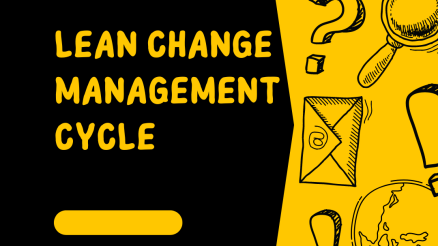In today’s world, organizations face a myriad of challenges that can escalate into full-blown crises if not managed effectively.
Whether it’s a natural disaster, a cybersecurity breach, or a public relations nightmare, the ability to navigate and mitigate crises is paramount.
However, crisis management is not a process that can be left to chance. It requires a strategic approach, meticulous planning, and continuous evaluation.
That’s where Key Performance Indicators (KPIs) come into play.
In this blog post, we will explore the importance of measuring crisis management performance and delve into a comprehensive list of KPIs that organizations can use to gauge their preparedness, response, and recovery in times of crisis.
By understanding and tracking these KPIs, businesses can strengthen their crisis management capabilities, enhance stakeholder trust, and ultimately emerge stronger from adversity.
Let’s discuss this in detail
What is crisis management?
Crisis management refers to the process of strategically handling and mitigating potential or existing crises within an organization.
It involves the proactive identification, preparation, response, and recovery from events or situations that pose significant threats to the reputation, operations, and overall well-being of the organization.
Crises can arise from a variety of sources, including natural disasters, product recalls, financial scandals, legal issues, cybersecurity breaches, or public relations mishaps.
Effective crisis management involves a systematic and coordinated approach that aims to minimize damage, protect stakeholders, restore normal operations, and maintain or rebuild trust and confidence in the organization.
It requires careful planning, swift decision-making, clear communication, and ongoing evaluation to ensure the best possible outcomes in times of uncertainty and adversity.
What are Key Performance Indicators?
Key Performance Indicators (KPIs) are quantifiable metrics or measurements used to assess the performance and progress of an organization, team, or specific objectives. KPIs provide a way to track and evaluate key factors that contribute to the success of a business or project.
They are typically aligned with strategic goals and objectives and serve as a means to monitor performance, identify areas for improvement, and make informed decisions.
KPIs can vary depending on the nature of the organization and its objectives. They can be financial (e.g., revenue growth, profit margins), operational (e.g., customer satisfaction, production efficiency), or related to specific areas such as marketing, sales, human resources, or customer service.
These crisis management KPIs can include metrics related to training effectiveness, response time, stakeholder satisfaction, information accuracy, recovery time, post-crisis evaluation, and implementation of lessons learned, among others.
You can also read about how to develop key performance indicators.
Importance of measuring crisis management performance
Measuring crisis management performance is of utmost importance for several reasons:
- Evaluation and Improvement: By measuring the performance of crisis management efforts, organizations can assess their effectiveness in handling crises. It allows them to identify strengths and weaknesses, pinpoint areas for improvement, and refine their crisis management strategies and processes. Without measurement, it becomes challenging to gauge the success of response efforts and make informed decisions for future crises.
- Accountability and Responsibility: Crisis management involves the coordination of various teams, departments, and stakeholders within an organization. Measuring performance creates a sense of accountability, ensuring that everyone involved understands their roles and responsibilities in crisis situations. It helps in clarifying expectations, setting benchmarks, and holding individuals or teams responsible for their actions or inactions during a crisis.
- Learning from Experience: Crises can serve as valuable learning opportunities. Measuring crisis management performance allows organizations to capture lessons learned from past incidents. By analyzing the data and feedback obtained, organizations can identify gaps, develop best practices, and implement changes to enhance their crisis management capabilities. It promotes a culture of continuous improvement and adaptation, enabling organizations to be better prepared for future crises.
- Stakeholder Confidence and Reputation Management: The way an organization handles a crisis can significantly impact its reputation and stakeholder relationships. Measuring crisis management performance helps in assessing the effectiveness of communication strategies, stakeholder engagement, and overall reputation management during a crisis. Positive performance indicators can help rebuild trust and maintain stakeholder confidence, while negative indicators can highlight areas that need attention to safeguard the organization’s reputation.
- Compliance and Regulatory Requirements: Depending on the industry and jurisdiction, organizations may have specific compliance and regulatory requirements related to crisis management. Measuring performance ensures that the organization meets these obligations and can provide evidence of its crisis management efforts if required. It helps organizations stay in compliance, mitigate legal and financial risks, and demonstrate a commitment to responsible business practices.
Crisis Management KPIs
We present here four broad areas to explain crisis management KPIs.
1. Crisis Preparedness and Planning
Following are the possible KPIs that can be developed to measure crisis preparedness and planning.
Number of training sessions conducted
This KPI measures the total count of crisis management training sessions conducted within a specific timeframe. It provides an indication of the organization’s commitment to preparedness and the frequency of training activities. Tracking this KPI helps assess the extent to which the organization invests in equipping employees with crisis management knowledge and skills.
Training attendance rate
This KPI measures the percentage of employees or relevant stakeholders who attend the crisis management training sessions. It provides insights into the level of engagement and commitment to preparedness within the organization. A higher attendance rate indicates a higher level of awareness and readiness among employees.
Training participation rate
This KPI measures the level of active participation and engagement during the crisis management training sessions. It assesses the extent to which attendees actively contribute, ask questions, and participate in interactive exercises or simulations. A higher participation rate suggests a greater level of involvement and understanding of crisis management concepts and strategies.
Completion of crisis plans
This KPI measures the percentage of crisis plans that have been completed within the organization. It reflects the level of preparedness in terms of having comprehensive and documented plans in place to address potential crises.
Review of crisis plans
This KPI measures the frequency and thoroughness of reviewing and updating crisis plans. It assesses whether crisis plans are regularly reviewed to incorporate new insights, lessons learned, and changes in the organizational landscape. It helps organizations stay agile and adaptable in their crisis response strategies.
2. Crisis Response and Communication
It is also important to measure organizational response and communication capacity during the time of cirsis.
Time to activate the crisis management team
This KPI measures the duration between the identification of a crisis and the activation of the designated crisis management team. It reflects the organization’s readiness and efficiency in mobilizing the necessary personnel to respond to a crisis promptly. A shorter time to activate the team indicates a swift and effective response, allowing for timely decision-making and coordinated actions.
Crisis management team response time
This KPI tracks the time it takes for the crisis management team to assemble, assess the situation, and start implementing response strategies. It measures the speed and agility of the team in initiating the necessary actions to mitigate the crisis. A shorter response time demonstrates the team’s preparedness, coordination, and ability to swiftly address the crisis.
Stakeholder feedback and satisfaction
This KPI involves collecting feedback and conducting surveys from relevant stakeholders, such as customers, employees, suppliers, and the public, to assess their satisfaction with the organization’s crisis response and communication efforts. It provides valuable insights into stakeholders’ perceptions, concerns, and level of confidence in the organization’s ability to manage the crisis effectively.
Organizational perception and reputation
This KPI measures the overall perception of the organization’s reputation among stakeholders during and after a crisis. It includes monitoring public sentiment, media coverage, social media discussions, and online reviews to gauge the sentiment and perception of stakeholders.
Social media sentiment analysis
This KPI involves monitoring and analyzing the sentiment expressed on social media platforms related to the organization’s crisis management efforts. It utilizes sentiment analysis tools and techniques to assess whether social media conversations about the crisis are positive, negative, or neutral. By tracking social media sentiment, organizations can gauge the overall public perception, identify emerging issues or concerns, and respond promptly to address any negative sentiment.
Social media engagement and reach
This KPI measures the level of engagement and reach of the organization’s crisis-related social media content. It includes metrics such as likes, shares, comments, and the number of followers or subscribers. Monitoring social media engagement provides insights into the effectiveness of the organization’s communication strategies, the reach and impact of their crisis messaging, and the level of public interest or involvement in the crisis.
3. Crisis Recovery and Learning
Following are some essential crisis management KPIs that are used to gauge organizational ability to recover from a crisis and its learning capacity from a crisis situation.
Time to restore normal operations
This KPI measures the duration it takes for the organization to fully recover and resume normal operations following a crisis. It assesses the efficiency and effectiveness of the organization’s recovery efforts. A shorter time to restore normal operations indicates a swift and successful recovery, minimizing the disruption to business operations and reducing financial losses.
Business continuity plan activation time
This KPI measures the time it takes to activate the organization’s business continuity plan (BCP) after a crisis. It evaluates the organization’s readiness and ability to implement predetermined strategies and processes to sustain critical functions and minimize the impact of the crisis on business operations. A shorter BCP activation time indicates a proactive approach to ensuring continuity and resilience during a crisis.
Recovery cost and resource utilization
This KPI measures the financial cost and resource utilization required to restore normal operations after a crisis. It includes expenses related to equipment repair or replacement, additional staffing, outsourcing, and other recovery-related costs. Tracking this KPI helps assess the efficiency of resource allocation and cost management during the recovery phase.
Time to resolve the crisis impact
This KPI measures the duration it takes for the organization to fully address and mitigate the impact of the crisis on various aspects, such as operations, reputation, finances, and stakeholders. It assesses the effectiveness of the organization’s response strategies in resolving the immediate crisis and its aftermath.
Stakeholder recovery satisfaction
This KPI measures the satisfaction levels of stakeholders, such as customers, employees, suppliers, and investors, with the organization’s efforts to resolve the crisis impact. It involves collecting feedback, conducting surveys, or monitoring sentiment to gauge stakeholders’ perception of the organization’s recovery actions.
Financial recovery and performance
This KPI assesses the organization’s financial recovery and performance after a crisis. It includes indicators such as revenue growth, profit margins, cash flow, and return on investment. Tracking financial recovery metrics provides insights into the organization’s ability to bounce back from the crisis and regain financial stability.
Implementation of lessons learned
This KPI measures the extent to which the organization implements the recommendations and lessons learned from post-crisis evaluations. It evaluates the organization’s ability to translate insights and findings into actionable changes in policies, procedures, training programs, and communication strategies.
Continuous improvement initiatives
This KPI tracks the number and effectiveness of continuous improvement initiatives implemented as a result of post-crisis evaluations. It reflects the organization’s commitment to ongoing enhancement of its crisis management capabilities. These initiatives can include training enhancements, process refinements, technology upgrades, or communication strategy improvements.
4. Integration of recommendations into future plans
It is also important to measure to what extent an organization is capable to integrate all learnings and crisis management recommendations into its future plans.
Integration of recommendations into future plans
This KPI measures the extent to which the recommendations and lessons learned from post-crisis evaluations are integrated into future crisis management plans and strategies. It evaluates the organization’s ability to apply insights and improvements derived from past experiences to enhance future preparedness and response.
Training and awareness based on lessons learned
This KPI assesses the organization’s efforts to incorporate lessons learned into training programs and increase awareness among employees and relevant stakeholders. It measures the number of training sessions or workshops conducted specifically to address the identified gaps or areas for improvement identified in post-crisis evaluations.
Training effectiveness based on lessons learned
This KPI evaluates the effectiveness of training programs designed to address lessons learned from previous crises. It measures factors such as participant feedback, performance improvement, and the application of learned skills and knowledge during crisis simulations or real-world incidents. Tracking this KPI helps assess the impact of training initiatives in enhancing crisis response capabilities and validating the integration of lessons learned into practical skills.
Final Words
Crisis management efforts cannot be truly optimized without the use of crisis management KPIs to measure and evaluate performance. By tracking KPIs such as training effectiveness, stakeholder satisfaction, time to activate crisis management teams, and social media sentiment analysis, organizations can assess their performance, identify gaps, and take proactive measures to enhance their crisis management capabilities. Ultimately, the successful management of a crisis hinges upon an organization’s ability to monitor and adapt its strategies and actions in real-time.



